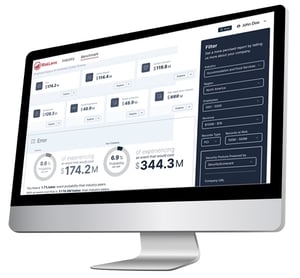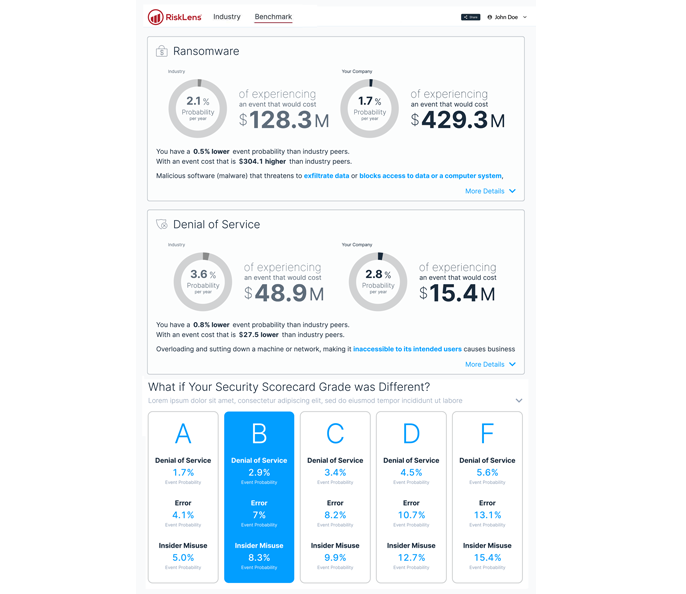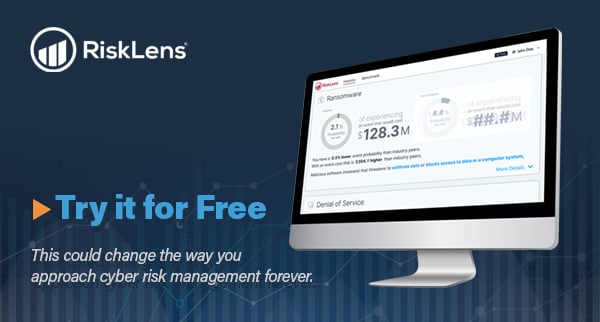 It’s critical that you know what your organization faces from an ever more threatening cyber risk landscape and that you provide the business with the right level of visibility into cyber risk. But you don’t have the time, staff, or funding to field your own cyber risk analytics team, and just reading up on ransomware, business email compromise, malicious insiders and other cyber worries doesn’t give you enough actionable intelligence to know how to make the case for cybersecurity investments within your company.
It’s critical that you know what your organization faces from an ever more threatening cyber risk landscape and that you provide the business with the right level of visibility into cyber risk. But you don’t have the time, staff, or funding to field your own cyber risk analytics team, and just reading up on ransomware, business email compromise, malicious insiders and other cyber worries doesn’t give you enough actionable intelligence to know how to make the case for cybersecurity investments within your company.
The free RiskLens Industry Cyber Risk Report fills that gap. We’ll give you a ranked list of your most likely top three categories of cyber risk, based on the cybersecurity experience of your industry. For an affordable premium (and some lightweight entry of data about your business), we can unlock the RiskLens My Cyber Risk Benchmark tool that will customize your list of top risks based on probable losses for your business from cyber events.
First Steps to Prioritizing a Cybersecurity Budget Based on Risk
With RiskLens reporting, your organization can begin to pivot to a well-informed, risk-based cybersecurity strategy.
- The RiskLens Industry Cyber Risk Report gives you a starting point for prioritization, with the top three risks for your industry.
- The RiskLens My Cyber Risk Benchmark tool upgrade shows your loss exposure to cyber events in seven categories of risk (ransomware, insider error, insider privilege abuse, etc.), and empowers you to benchmark your performance against industry averages, for more detailed guidance on prioritizing your security program.
- Also included in My Cyber Risk Benchmark: Your SecurityScorecard rating that factors in multiple gauges of cybersecurity strength – and the capability in the tool to game out the effect on your risks of investing in improving your rating.
RiskLens Is Your Entry Point to the Most Sophisticated Cyber Risk Management Techniques
A risk-based approach to cybersecurity requires data and modeling that generate the most accurate and relevant estimates of risk. One common way to estimate risk in a data breach has been to multiply the number of records in the database by a fixed dollar value (typically $150) – but that soon leads to implausible results (10 million records would be $1.5 billion in losses). Cyber risk analysis must be more sophisticated than that.

The RiskLens data science team has leveraged the best available data on cyber loss events from Advisen, Verizon and other trusted sources, taken a deep dive into the data and applied Factor Analysis of Information Risk (FAIR™) analytics and other advanced data science techniques to uncover unprecedented granularity in cyber risk across industries, company revenue, size of databases, geographic location (US vs EU), and many other variables, as well as covering legal fines and judgments, incident response costs and more forms of loss.
For instance, RiskLens data science can develop a loss estimate specific to a company based in North America in the healthcare industry, with $4 billion in revenue and a specific number of personal health (PHI) records.
The results you see in the RiskLens Cyber Risk Industry Report and the RiskLens My Cyber Risk Benchmark have been refined to present you with easy to grasp, high-level results, standing on the most sophisticated – and trustworthy – data and data science available on the market today.
